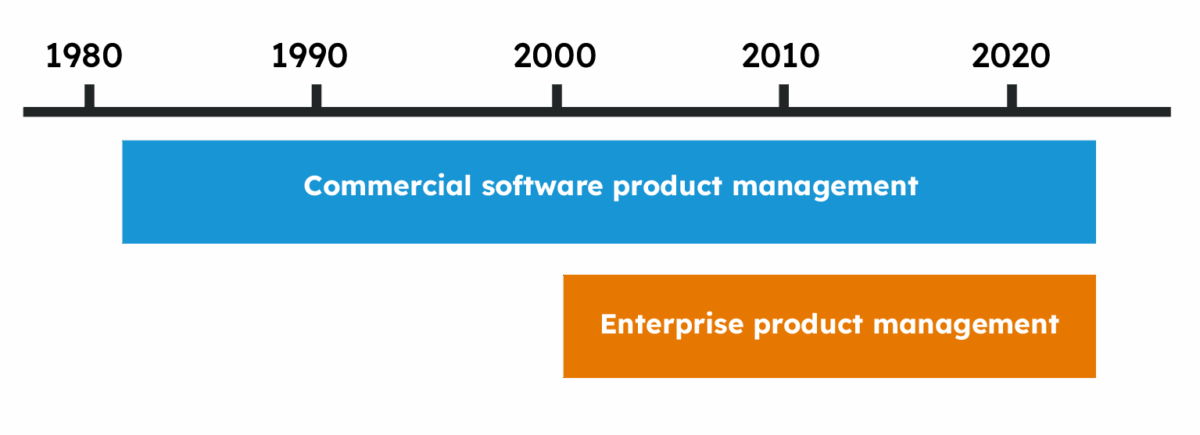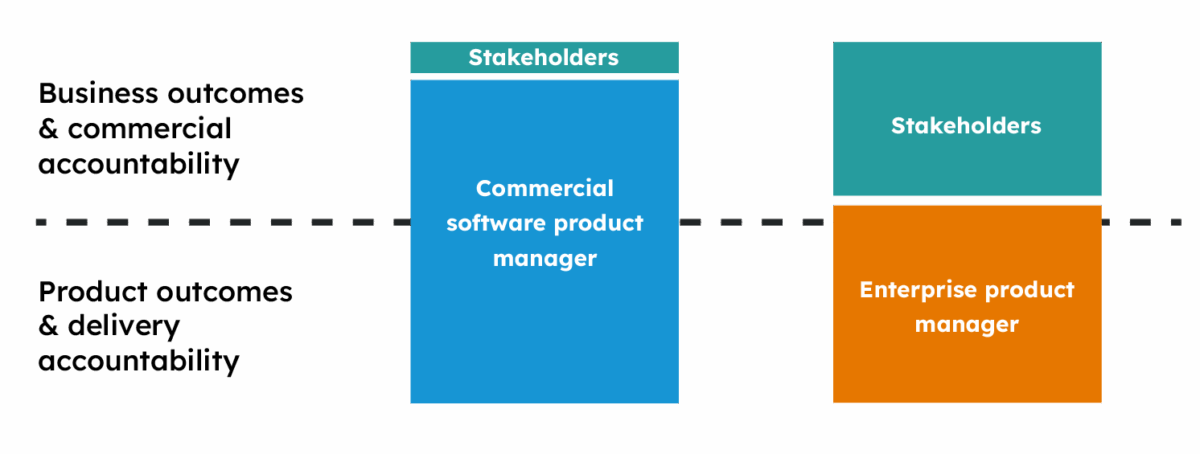What happens when you try to run enterprise product teams using the same methods as Silicon Valley tech companies? You’ll often end up with frustrated product managers, conflicts between stakeholders and stalled product transformation initiatives.
At Equal Experts, we help companies shift from traditional project-centric models to modern product-led operating models. But in large enterprises, where software underpins the digital business model but isn’t the primary product sold to customers, this shift is particularly difficult. Unfortunately, this is often where we see product managers left feeling disempowered and disillusioned by their role.
A common frustration for enterprise product managers
Many enterprise product managers read articles and attend conferences that celebrate the successes of product leaders within digital-first tech organisations and Silicon Valley heavyweights. They’re inspired by the tales of product managers who own the future vision, shape commercial strategy and drive outcomes with autonomy.
But back at their desks, they often face a very different reality. Their commercial colleagues (“the business”) still hold the reins of autonomy and influence, so they often feel cut out of strategic conversations. This mismatch between aspiration and reality can cause imposter syndrome, frustration, or even open conflict with stakeholders over boundaries and accountability.
Recently, a product director at a US airline rebooting their product management function asked me what my key advice might be. I half-jokingly replied: “Don’t let your teams read any Silicon Valley product books!”
At Equal Experts, we believe you need to think differently about product models if you’re at an enterprise organisation. You must acknowledge the realities of enterprise environments, rather than chasing methods designed by tech-centric, digital-first companies. Instead, help your teams build their product influence and autonomy within the constraints of an enterprise setting.
Why most product thought leadership misses the mark for enterprise organisations.
Most product management thought leadership today is based on what works for building commercial products rather than building digital enterprise products. One reason is that product management practices have been used in commercial software companies for so much longer.
Software product management originated in the 1980s and 1990s at companies building software products competing against rival products for market share. First used to create boxed software, it continued to be vital to the success of the internet-powered software companies we know today (think: digital-first startups, scaleups, or SaaS vendors).
Meanwhile, traditional enterprises were largely offline and non-digital and so had no incentive to adopt software product management practices. With no revenue coming directly from selling software, it made sense to maintain their IT-operating model of using portfolio and programme managers to ensure roadmaps and quarterly plans aligned with business strategy and objectives.
It wasn’t until the 2000s and 2010s, with the introduction of agile methodologies and digital transformation, that enterprises adopted modern product management principles, using them to create web and app user journeys, ecommerce sales funnels, customer admin portals, backend capabilities and platforms.
But by then, commercial software had a 20 to 30-year head start in product thought leadership and has dominated the conversation and the content landscape ever since.

Why commercial software product guidance doesn’t fully apply to enterprise products
Commercial software advice isn’t completely irrelevant for enterprise products, but it’s often not completely helpful if applied without understanding the differing context within enterprise product teams.
For commercial software organisations, their business is selling software applications and subscriptions. It grants product managers accountability for commercial strategy, profit and loss, and business outcomes – placing them near the political centre of the organisation.
Enterprises are different; they build software products to enable their digital business models, not as their core business, which means commercial strategy and political power are not software-centric. Commercial stakeholders – not product managers – are accountable for P&L and impacting business outcomes.
This means we see a different flavour of product management emerge in enterprises. One where product managers are expected to align software delivery to the business strategy, not define the strategy themselves.

Yes, there are still huge overlaps between commercial and enterprise product roles, given they are, after all, the same discipline! But the differences are significant and critical enough that guidance for the former is not always applicable to the latter.
When commercial product guidance is applied without adaptation, enterprise product managers can hit organisational brick walls, become disillusioned and wonder if they are “real product managers”.
Moving product forward in enterprises
Recognising these differences is the first step to tackling the issue in enterprise organisations.
In part two of this series, we will explore the key steps product managers can take to increase their influence within enterprise organisations in a way that works with the system, not against it.
At Equal Experts, we help teams shift their product operating models through practical advice, hands-on support, product maturity assessments and more. Contact our team to find out more about our product service.






